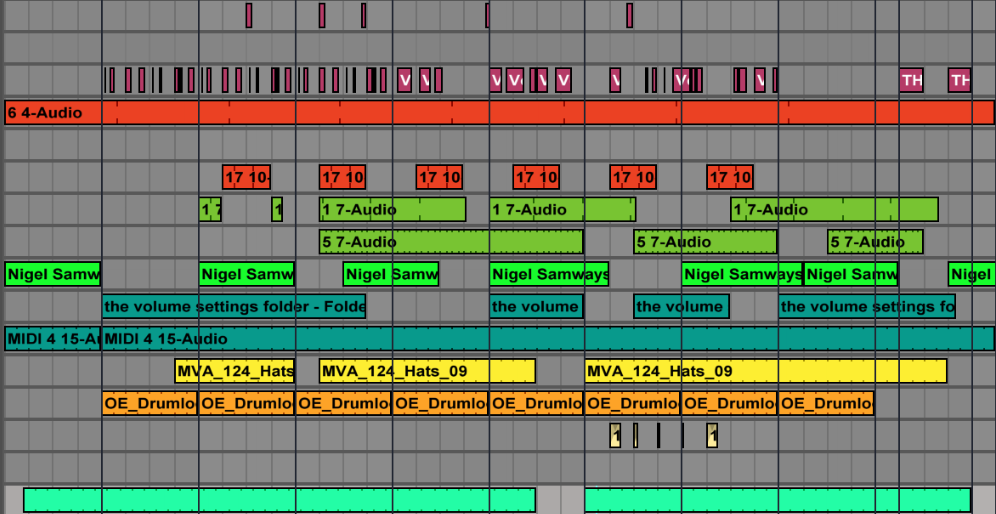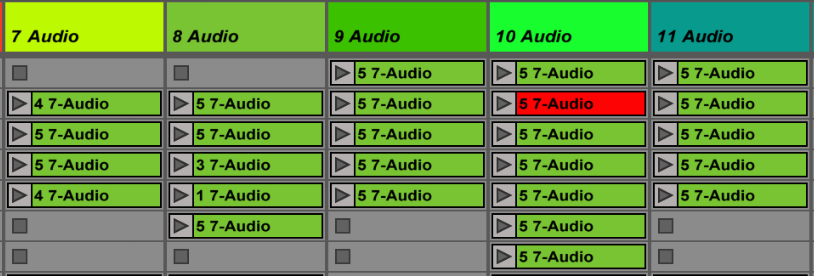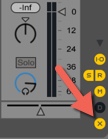Using Imperfection As a Leverage
The last few weeks have been quite exciting for me. This year so far has brought me a lot of joy when it comes to music. After being at the service of my clients on a full-time schedule for the last nine years, I realized that bringing the spotlight on myself was essential for my creativity and sanity. Moreover, after teaching and explaining concepts for that long, it was time for me to dive into my needs and apply them.
But what ignited much passion recently was that I was invited to play a DJ set, which at first was a bit unsettling, but it turned out to be a positive thing as I dove into digital mixing. I haven’t DJ a set since 2011 and didn’t have fun either. As someone who feels like himself when playing live, DJin feels like a limited version of my creative self. But using Pioneer’s Rekordbox and a controller, I realized that things have changed a lot since and that it’s pretty exciting.
I’m fortunate to have a label (Archipel), and many friends, which made my music collection quite rich, so playing that music felt like rediscovering two things: layering music and creative storytelling.
Most importantly, it reminded me that if you make music for DJs, you will benefit from DJing yourself to know what works or not with your art.
I made a few realizations while improvising music, which I’ll share in this post.
Tracks vs Songs
One of the first things that come to mind when mixing music is that if the music is too full or too arranged, it is hard to layer it over other music. One term we use in music production is “stripped-down music” for tracks that are generally more repetitive and, on first look, feel a bit underwhelming. If you’re into layering music, those songs are a DJ’s best friend. This comes as eye-opening as I am into tightly executed arrangements, and now, when I mix, I tend to search for those mellow songs to mix in just for the texture it brings.
Some songs that I love listening to become a nightmare to mix because they’re overly busy, and relying on the EQ to attenuate some frequency range brings down way too much from that song.
Clients who are worried their music is boring don’t realize that it might actually be a good thing because a song that is slightly repetitive and not so exciting can actually be an excellent tool for a DJ.
When minimal was at its peak in the early 2000s, I remember journalist Philip Sherburne describing minimal techno as “music that feels unfinished but released anyway,” he wasn’t wrong. It was primarily because leading DJs would layer all kinds of songs simultaneously as a performance. Richie Hawtin was the leader of this, as Algorithm, Mike Shannon… I’d say it is an art to find the right balance, and in this interview, Hawtin explained that for his Concept:96, he was focusing on working with elements essential to the song, discarding anything else.
Many people forget that DJ tracks aren’t necessarily made to be listened to independently. You may if you want, but it might be slightly underwhelming. If it is, it’s perhaps done right, which is mind-boggling for many producers who often stress that people might get bored.
I’m blantantly going to point out EDM as the main actor for making overly arranged music, creating a standard that contaminated other genres. If EDM brought people on board to the electronic scene, it also confused the new people that it is the way music should be made.
The strength of music that is filled with risers, swooshes, reverse, effects, drops, and breaks is that you’ll have a crowd that is paying attention, and it will also remove intervention for the DJ to do… or maybe they will induce more action, creating a wall of noise. I don’t despise this genre, but it is not what I want from music. I’m more interested in a hypnotic effect, subtle transitions and a mysterious music excursion.
Back to unfinished songs, I’m not even observing that music that is not so well mixed can also engage in mixing as their imperfection can be blended into a song. I mainly refer to songs with weird filtering or sloppy low-end. Of course, on their own, it’s a bit rough, but as a third deck song, as a way to complement what’s happening, it adds a layer of frequencies that can be a nice colour. Well-mixed songs can carry a set, but there is room for imperfectly mixed songs to be added, as long as you don’t leave them on their playing.
Negative Space In Arrangements
This brings me to negative space, or “holes.” These are voluntary spaces, silences, and blanks you leave in your patterns or longer phrases. The beauty of these silences comes to life when mixing another song, where some aspects of song B reply to elements of song A. When you think this way, this opens up a whole range of options:
- Negative space in percussion patterns: Instead of having a full line of an element playing, you could mute half or a quarter of the bar to have space for other percussion.
- Space in section: You can see your melodies and patterns by sections where they can play for 1 to 4 bars, then go mute. You can also alternate melodies every X bar instead of having them play throughout the song (a common mistake I see in arrangements).
- Less transition, more spontaneous elements: You don’t need to have sounds at every transition. Have it less, and instead, use decorative elements here and there. When mixing with another song, these elements might converse with another song.
- Reduce your checklist: Sometimes I feel like a song has a checklist of all the elements it needs to be “full,” so why not leave some out? You could leave out the claps, arp, bass, or something you usually put in de facto. Most other songs have those elements, so leaving an “essential out” is a soft way to create tension.
- One-note melodies: We often trick ourselves into thinking melodies need multiple notes to be fun, but using one note can go a long way. It can also be layered with another song with 1-2 notes, creating a new melody. Harmony happens when multiple notes are combined, so having a track with one note complements other songs. One-note sequences are quite helpful in the intro or outro of a song.
Breakdowns, Drops, Effect
Now, let’s discuss things I don’t like about mixing. The first one I need to mention is something I’ve been saying for a long time: breaks.
I don’t understand why each song has a breakdown. Especially long ones. Having a moment with less energy can be fun and offer a different flavour to how the song is built, but you don’t always need a long pause in your music. It has become too easy just always to have breakdowns, as when there is then a drop, people react. There are other ways to do that, and each song has a long break, which gets tiring. As I said in past posts in this blog, it’s the DJ’s job to know when the best moment to drop the energy is, and if you do it for them, it can get irritating.
I found myself using hot cues to skip breaks, and in some cases, I’m now creating edits of the songs where I remove them. Once removed, it feels even like it shouldn’t be there.
Once again, in EDM, one of the main ideas of a breakdown is that once the drop happens, it should propose a new twist (ex., change of percussion pattern or introduction of a new sound). I like that in some way, but not in every song. This is something to be considered for repetitive music, which is in the last third of a song, to add something new and complementary.
This also goes for effects, swooshes, and risers, which are all over the top and unnecessary. Again, I removed some of them in songs I’d want to play.
I’m starting to like “empty-sounding songs,” pretty straightforward ones. Is that a return to my 90’s roots? Perhaps yes.
Arrangement Techniques
There are multiple ways to write arrangements for DJs who, like me, are into layers and long mixing sequences. You can search my blog with the arrangement topic to find a bunch, but I’ll share the ones I’m currently using. Yes, at the moment, I’m lost in a rabbit hole of making DJ-tools songs for my pleasure and enjoying it quite a bit.
1. Find a track you like as a reference, play it in the background of your arrangement, and build your song to fit over it. I recommend isolating the last 2-3 minutes of the reference and then developing your intro over it. This is particularly useful if you struggle with how to start a song.
2. Decorate your track using the reference song and place your “events” at moments where it complements it. For instance, you could add a few notes to answer the ones of the arrangement or place a vocal at another point. These are fun for a DJ to use because as the song goes, they can loop part of your track and layer it over the song that is playing. Sometimes, for longer tracks, where the DJ is waiting for the last part to mix in a new one, there are a few minutes to kill, so if you provide something playful, the DJ can be creative and do subtle mixing or crossfader tricks.
3. Add Bonus content. When your song is done playing, add a few seconds of silence and then the effects, risers, or whatever you want. That way, you can load the track twice, and the second one can be used to decorate the first one.
4. Test your music. Rekordbox is free to download and useful for testing. Load up your references and newly done tracks, then layer them to see how it goes. You can also do that in Ableton or your DAW. Adjust. I don’t think the first version you will do will be the best.
5. Live Jam. This one is where you can have a lot of fun and be less intellectual. Have your reference play, and then gather a bunch of loops you can jam with. The idea is to jam those loops over the reference. See this as if you were the DJ but with more control. Another way to approach this would be that you’re collaborating. Mute the reference and listen to what you have. It might feel a bit weird on its own, but you’ll have a layer to work around as you can build your core song around your playful jam. You don’t have to keep it all. You can trim the best parts.
Leave your comments below if you have other suggestions and ideas. I’d love to read them.
Photo by Anne Nygård on Unsplash














